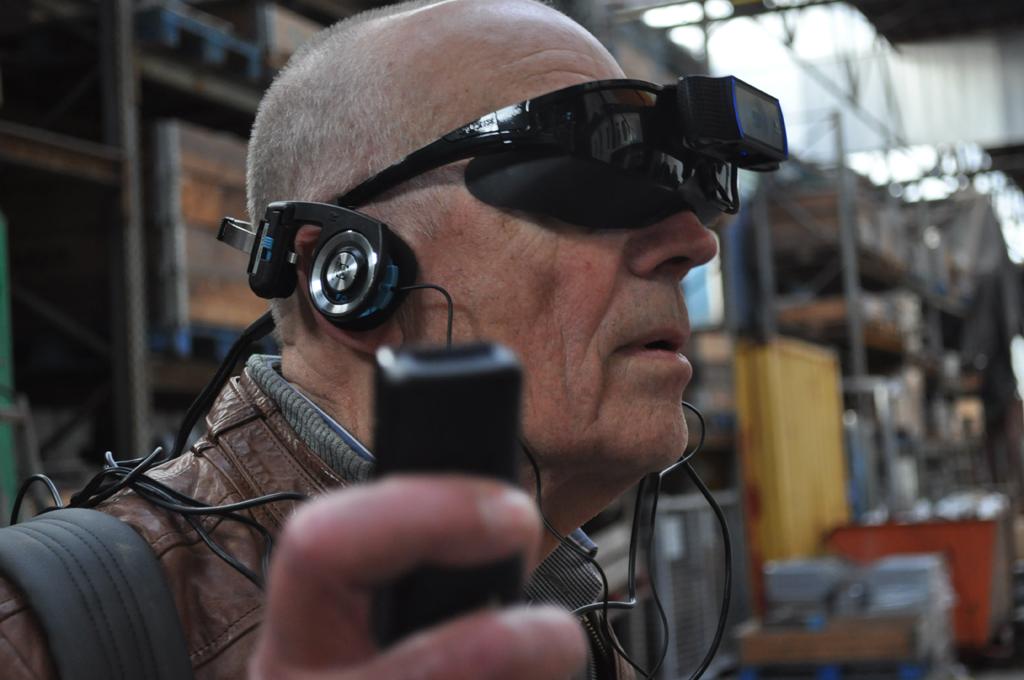It's cold at the NDSM wharf and it is going to rain. I make my way into an old warehouse and start looking for the Pick-UP Theater. I want to see the Labyrinth Psychotica, a creation of scientist and artist Jennifer Kanary, which is set up here especially for PhDO 7. A maze made of a steel frame and all kinds of fabric, in which you can experience what it is like to have a psychosis. And guessing from the turnout, I'm not the only one who wants to see this. In total, about seventy people came to Amsterdam-Noord to hear more about Jennifer's taboo-breaking research into psychosis. And to talk about how we deal with these stigmatizing diseases in our society.
The labyrinth
According to Jennifer, the maze will let you experience the milder elements of psychoses. It is an alienating and exciting experience, but not necessarily frightening. Narrow paths, beeps, lights and voices that issue commands like 'Put on these headphones’. I put them on but nothing happens and I feel a little silly. Why do I suddenly follow random assignments that I get from a person I cannot see and I do not know? Another guest, Theo, is also in the labyrinth. While he is trying to make his way through the corridors, I can see his feet under the cloth shuffling back and forth. He has lost his way and needs help getting out of the simulated psychosis. "Watch the ceiling Theo, that helps!" Jennifer calls. When he finally finds the exit he hugs her and smiles, relieved.
The Wearable
Time to try the Wearable, an 'Interactive Augmented Reality Cinema Walk', which simulates a psychosis more intensely. In other words: a backpack full of technology, glasses and headphones. Theo is the first to take on the challenge. He tells us what he experiences, sees and hears. "What do you say to me? And where are you taking me? " he asks. Then he sees worms everywhere and he no longer knows what is real and what the Wearable is showing him. "I think this is reality, but everything is red. I see people, but that's probably not true." What Theo does not realize, is that we are actually standing right in front of him.
We look at him and see how he becomes increasingly confused. "I see only darkness ... and a few things that I cannot distinguish. Oh yes, they are the faces of little mice!" That does not sound scary, little mice. Jennifer explains that psychosis is not necessarily scary. "Large parts of a psychosis are actually very nice to experience", she says. Meanwhile, Theo begins to dance. He takes a step to the left, two to the right, and then left again... he follows orders from a voice that we do not hear. Just as I did in the labyrinth. Until he reaches a limit: "I won’t do that! Who do you think you are", he says irritably. Afterwards, Theo tells me that it was an impressive experience. "They could still improve the sound because that was a bit creaky. But this intense!"
Science & Art
After the tests, Jennifer presents the work she has been doing over the past six years, illustrating what happens when you combine art and science: innovative research methods, different insights and getting attention from a wider audience. And that is exactly what PhDO is about: not only the theory of art or science, but the practice of both fields combined.
Check out the pictures of this afternoon.
